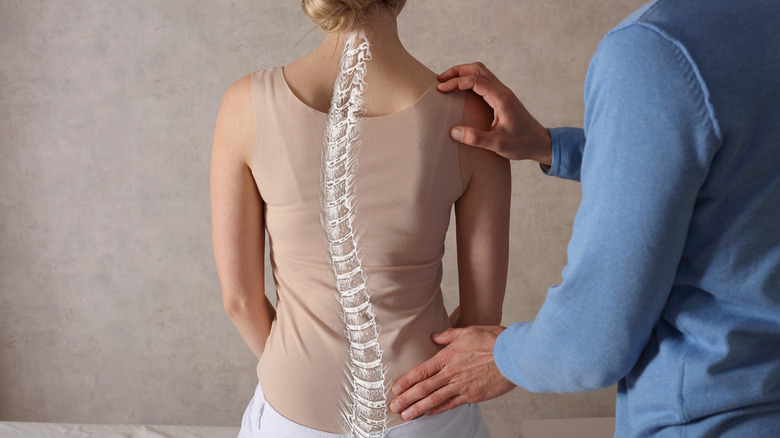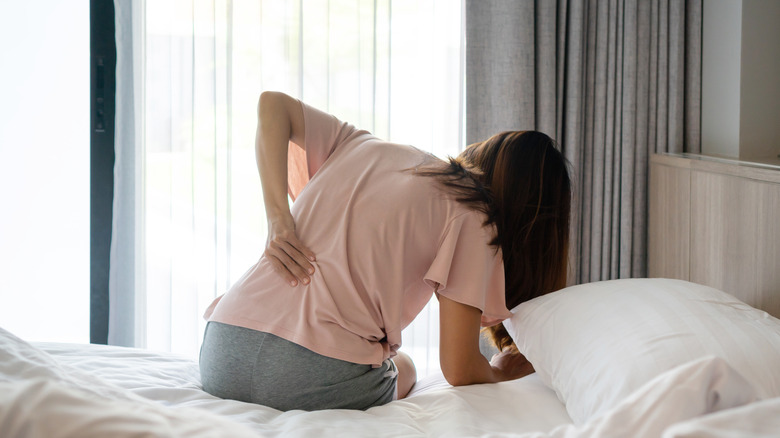This Is What Really Causes Scoliosis
Do you have scoliosis? Do you experience back pain and muscle aches because of it? You're not alone. The American Academy of Neurological Surgeons estimates that six to nine million people in the U.S. are living with this condition. About 23% of people with the condition have horrible, excruciating, or distressing pain that affects their everyday life, according to CLEAR Scoliosis Institute. Some also experience depression, low self-esteem, and other emotional problems.
Scoliosis tends to affect children and teens, but it's possible to develop this problem later in life. The primary symptom is an abnormal curvature of the spine, explains the Mayo Clinic. This deviation can be more or less severe and may worsen over time. In some cases, it may cause back pain, uneven shoulders, spine or hip asymmetries, and other issues. For example, an earlier study conducted on nearly 1,500 teenagers with scoliosis found that 73% had experienced at least one episode of back pain in the previous year, reports the orthopedic journal Spine.
But what causes scoliosis? Is this condition related to poor posture, heavy lifting, and other lifestyle factors? Let's find out.
Most cases of scoliosis don't have a known cause
About 80% of all scoliosis cases are idiopathic, or of unknown origin (per Johns Hopkins Medicine). Sometimes, this condition is due to an underlying disease, such as arthritis, but it can also have genetic causes.
Cerebral palsy, poliomyelitis, congenital hypotonia, Marfan syndrome, and other birth defects or health conditions may increase a person's risk of developing scoliosis, reports a 2007 review published in Paediatrics & Child Health.
As the researchers note, scoliotic curves below 30 degrees are unlikely to progress, while those greater than 50 degrees tend to get more severe over the years. A curvature greater than 90 to 100 degrees can lead to heart failure. Generally, surgery is only recommended in severe cases, such as when the spinal curvature exceeds 50 degrees, according to Johns Hopkins Medicine.
Adults with mild scoliosis may opt for physical therapy and over-the-counter pain killers, notes the Cleveland Clinic. Regular exercise and daily stretching can help, too. Adults with severe back pain may benefit from nerve block injections.
Unfortunately, there is nothing you can do to prevent scoliosis. Even if you stay active and maintain good posture, you can still experience this problem. However, it's possible to slow its progression through regular exercise, especially core work and low-impact activities, says the Cleveland Clinic. Consider reaching out to a physical therapist to discuss your needs and decide on the best course of action.


